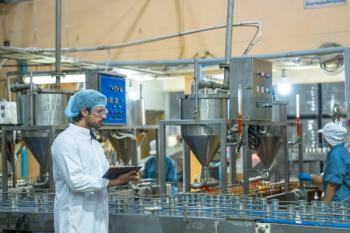
Time Well Spent: Productivity with Purpose in Research
Key Takeaways
- Tenure-track faculty face immense pressure to publish, with publication rates peaking before tenure and diverging post-tenure across disciplines.
- The slow work movement emphasizes pacing research to foster creativity and innovation, countering the fast-paced, high-pressure environment.
Productivity dominates today’s academic landscape. For those on the tenure track, the pressure to publish—at unprecedented speed and volume—has never been greater (1).
A study published earlier this year in Proceedings of the National Academy of Sciences (PNAS) examined the research trajectories of over 12,000 U.S. tenure-line faculty across 15 disciplines, integrating seven large-scale datasets to analyze productivity and creativity before and after tenure (1). The researchers found that publication rates typically rise sharply during the tenure track, peaking just before tenure is awarded. After tenure, however, trends diverge. Laboratory-based fields like biology and chemistry tend to sustain high output, while non-laboratory disciplines such as mathematics and sociology often experience declines.
At nearly every stage of an academic career, volume is rewarded. The study also revealed that earning tenure often triggers a shift toward more novel, higher-risk research across disciplines (1). Most faculty maintain at least one pre-tenure research agenda, while more than half launch new ones, suggesting that tenure frequently reshapes the direction and scope of scholarly work.
This pressure to produce isn’t limited to academia; industry labs also face demands to process large volumes of samples quickly, balancing the expectations of upper management and clients alike. The increased use of new technologies like artificial intelligence and machine learning has also led to an increased push for more productivity.
Across fields, the pace of work is accelerating, and many of us are working harder than ever. But in a world that increasingly prizes speed and volume, are we at risk of overlooking the value of slow work?
The slow work movement offers a deliberate counterpoint to the relentless acceleration defining today’s scientific environment (2). It advocates for pacing research in alignment with individual cognitive rhythms and long-term organizational goals, emphasizing that sustainable innovation requires time to think, reflect, and recover. In practice, slow work might mean longer project timelines that allow for deeper exploration, scheduled thinking days free from routine tasks, or spaces dedicated to interdisciplinary dialogue without immediate pressure to produce.
Far from a call to reduce productivity, slow work prioritizes quality over quantity, fostering an environment where creativity and insight can flourish. Historical precedent supports this approach; many scientific breakthroughs were the result of extended, collaborative, and often nonlinear efforts. Yet slow work faces challenges in academia’s current “publish or perish” culture, where immediate outputs are rewarded and funding timelines are tight.
Overcoming these barriers requires intentional leadership to shift mindsets and institutional policies. Importantly, slow work also plays a critical role in safeguarding researchers’ mental health and preventing burnout, ultimately sustaining a productive scientific workforce over the long haul.
Investing Time in Teamwork
Significant scientific breakthroughs rarely happen overnight. They often take decades to develop and result from the collective efforts of hundreds, sometimes thousands, of scientists spanning industry, academia, government, and independent consulting. In science, collaboration is essential for driving future discoveries. Researchers need time and space for informal connections.
When scientists are under relentless pressure to prioritize publishing or deadlines, they often lack the time and resources to pursue long-term, foundational projects that require sustained effort and patience. In this high-pressure environment, traditional approaches to research and teamwork often fall short. The constant push for quick results can stifle creativity, limit meaningful collaboration, and isolate researchers behind individual metrics and deadlines. Without intentional efforts to build trust and encourage open dialogue, teams risk becoming fragmented and less innovative.
To overcome these challenges, organizations need to rethink how they support researchers, not just by setting productivity targets but by cultivating a culture where diverse ideas flow freely, risk-taking is encouraged, and collaboration thrives (3). This shift is essential to unlock the full potential of scientific teams and sustain long-term progress (3).
By fostering these conditions, leaders can bridge the gap between individual creativity and collective innovation, laying the groundwork for sustained scientific progress. Such foundational elements not only bolster morale but also empower analytical chemists and interdisciplinary teams to navigate complex challenges more effectively, accelerating discovery and impact.
This conversation calls for nuance and careful consideration of individual needs and goals. Yet, in a culture obsessed with speed and relentless output, the greatest scientific breakthroughs remind us that true innovation cannot be rushed. It requires patience, collaboration, and the freedom to think deeply—qualities that flourish only when we resist the pressure to prioritize quantity over quality.
So, the next time your inbox dings or a deadline looms, remember, sometimes the smartest move is to pause, connect, and let great ideas unfold organically.
References
- Tripodi, G.; Zheng, X.; Qian, Y.; Murray, D.; Jones, B. F.; Ni, C.; Wang, D. Tenure and Research Trajectories. Proc. Natl. Acad. Sci. U.S.A. 2025, 122 (30), e2500322122. DOI:
10.1073/pnas.2500322122 - Pascoal, P. M. S.; Mendes, J. M.; Pereira, A. I.; Gomes, D. F. Slow Work: Conceptualization and Its Role for Sustainability in Organizations. Social Sciences 2024, 13 (3), 178. DOI:
10.3390/socsci13030178 - Bennett, L. M.; Gadlin, H.; Marchand, C. Collaboration and Team Science Field Guide; National Cancer Institute: Bethesda, MD, USA, 2010.
https://www.cancer.gov/about-nci/organization/crs/research-initiatives/team-science-field-guide/collaboration-team-science-guide.pdf (accessed 2025-08-12).
Newsletter
Get essential updates on the latest spectroscopy technologies, regulatory standards, and best practices—subscribe today to Spectroscopy.





